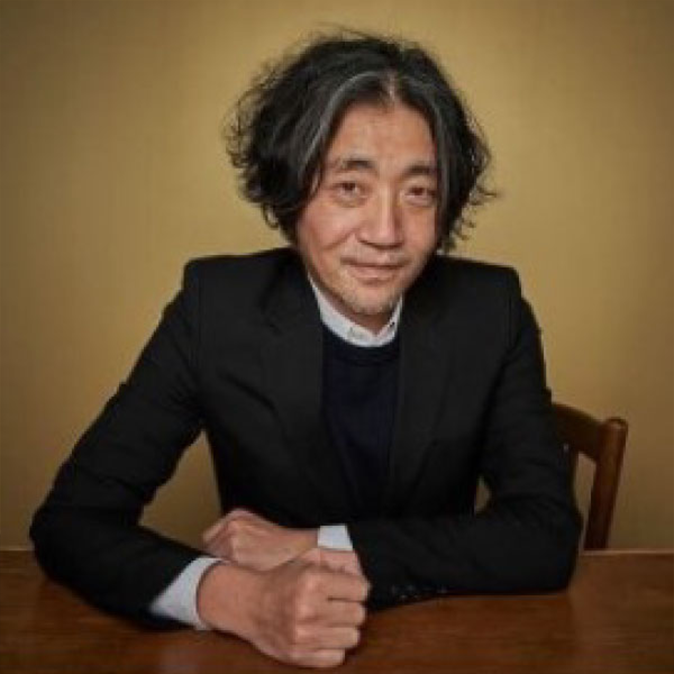- Events
Advertising Week Asia 2022 presentation report
Advertising Week Asia 2022 was a hybrid event, integrating real and online to give more opportunities than ever for people to participate. It featured a wide variety of sessions and networking activities from the perspective of “bringing together the marketing, media, technology, and creative industries to promote change.”
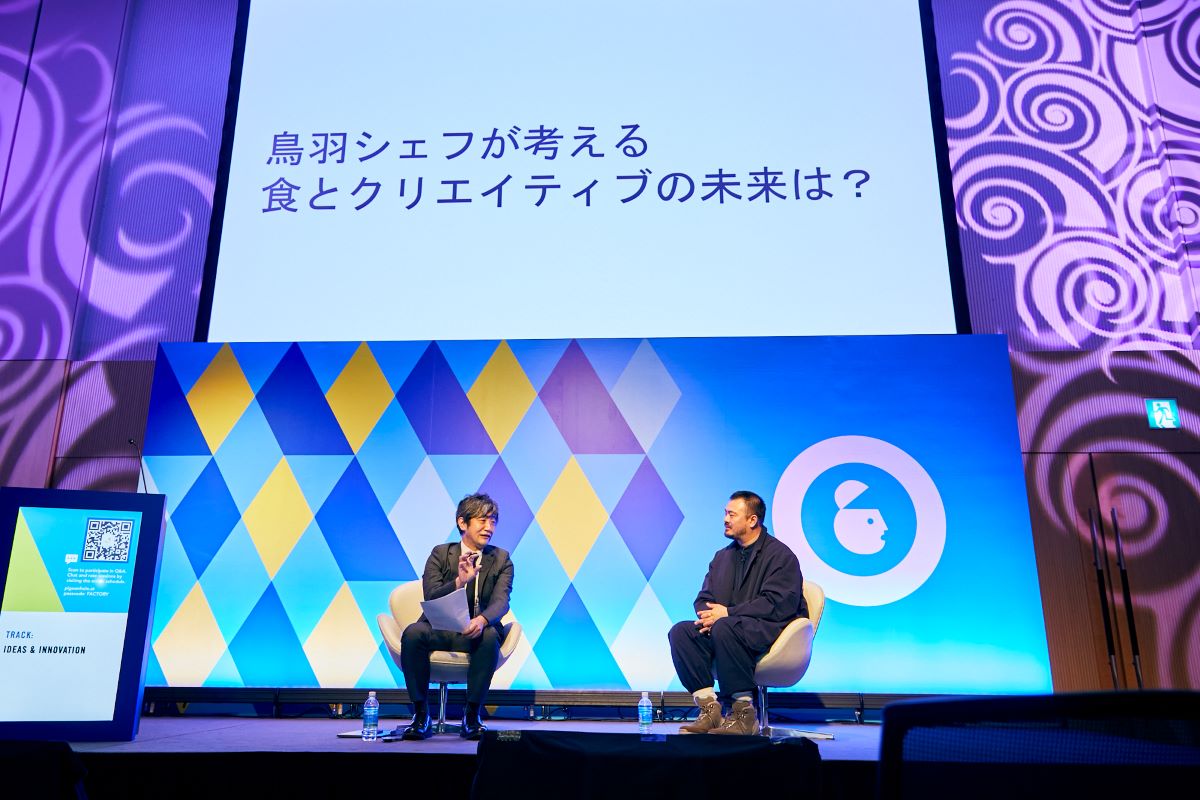
Sio, a French restaurant in the Yoyogi-Uehara district of Tokyo, has been awarded a star by the Michelin Guide Tokyo for three years running since 2020. When diners started staying away because of the Covid pandemic, owner and chef Shusaku Toba asked himself what they might like him to do. As a result, he began sharing his recipes on social media—and generated quite a buzz. He has been making waves ever since, including working on product development with multiple convenience store chains. He even launched the creative food company Sizuru Inc. in partnership with Hakuhodo Kettle.
Koichiro Shima of Hakuhodo Kettle was eager to team up with Toba-san after first meeting him several years ago. Here is a report on the session “Possibilities of Food and Creativity,” where he asked Toba-san what it takes to design a truly exciting experience.
A burgeoning interest in maximizing experiential value
SHIMA: A lot of people when they draw up a proposal reference the shift from consuming goods to consuming experiences or to “selling an experience.” But that’s easier said than done. In your case, Toba-san, whether you’re developing a product for a convenience store or selling items online—not to mention delivering a high-quality experience at your restaurants—you’re always so meticulous about how you design the experience. During the pandemic, you happily shared your recipes online and were quick to start offering delivery, billing it as “the Sio experience at home.” That, I thought, was creativity in action. Today I’d like to ask you how you manage to pull it off.
First, perhaps you could briefly introduce yourself.
TOBA: Well, I’m Shusaku Toba, owner and chef of Sio. I currently serve as CEO of the creative food company Sizuru Inc. in partnership with Hakuhodo Kettle, and I run several other restaurants besides Sio. I’m working on many different projects, all of which revolve around a single idea: making the world a more joyous place by increasing the denominator of happiness with great food.
SHIMA: Why did you choose to pursue a career in cooking?
TOBA: I originally wanted to become a professional soccer player, but I abandoned that dream in the end, and for a while I didn’t know what to do next. Then I started working at a café, since I love cafés. I thought that if I was going to run a café one day, it would be better to know a thing or two about the finest food and drink. So I moved to a restaurant, and I was hooked. I realized that this was my calling.
A full-course meal is like a movie. You can maximize its “experiential value” by controlling where the element of surprise or delight is experienced. I realized that at the first place I worked, and I’ve been relentlessly pursuing the idea ever since.
SHIMA: One interesting thing you’ve been up to lately is Sio’s opening hours strategy. It’s a French restaurant, yet you serve a Japanese-style set breakfast with salmon as the main attraction, right?
TOBA: That’s right. We began that with the idea of bringing satisfaction to more people by extending our hours instead of just opening afternoons and evenings. The salmon is cooked in the French style after the skin has been left to dry for a day and punctured with tiny holes using a needle. By doing what you normally couldn’t for 2,500 yen, we succeed in delivering value that’s worth getting excited about. Now mornings are the hardest time to get a reservation.
Being creative takes the ability to imagine your audience
SHIMA: Ordinarily you slice off pieces of salmon with your chopsticks by pushing down, but this salmon feels completely different when you cut into it. Your chopsticks sink in with a series of crackles. It’s a wonderful sensation. It’s of course important to design the product itself to offer a high-quality experience, but what you’ve done is expand experiential design to the mass market. For example, you serve as corporate chef of Euglena, which sells items made from the organism of the same name, and work on product development there. You’re also involved in developing products for multiple convenience store chains.
When I first met you several years ago, you told me, “I want to run a restaurant, but what I want to run is a family restaurant. That’s my dream.” You weren’t content to rest on your laurels as a Michelin-rated chef. Chefs who are uncompromising about the food they make tend to be focused like a laser beam, so it’s fascinating that you’re so open to the idea of catering to the mass market. Was that always your intention?
TOBA: It’s largely due to the influence of someone I’ve worked with before, designer Manabu Mizuno. He’s the guy who designed the cuddly mascot Kumamon. He made me realize how important it is to create something really pop that is loved by everyone, that has mass appeal. I then decided I wanted to go about solving some of the many challenges out there through the creative medium of food.
Solving food-related issues at family restaurants and convenience stores can bring joy to many people and increase the denominator of happiness. That’s where I found my purpose in life. The high end of the market, surprisingly, has already hit the limit: there’s nowhere left to be creative. Projects catering to the mass market, conversely, give you more latitude. I therefore started sharing recipes for stuff like deep-fried chicken on YouTube. I’m focusing more than ever on doing things that appeal to a broad audience.
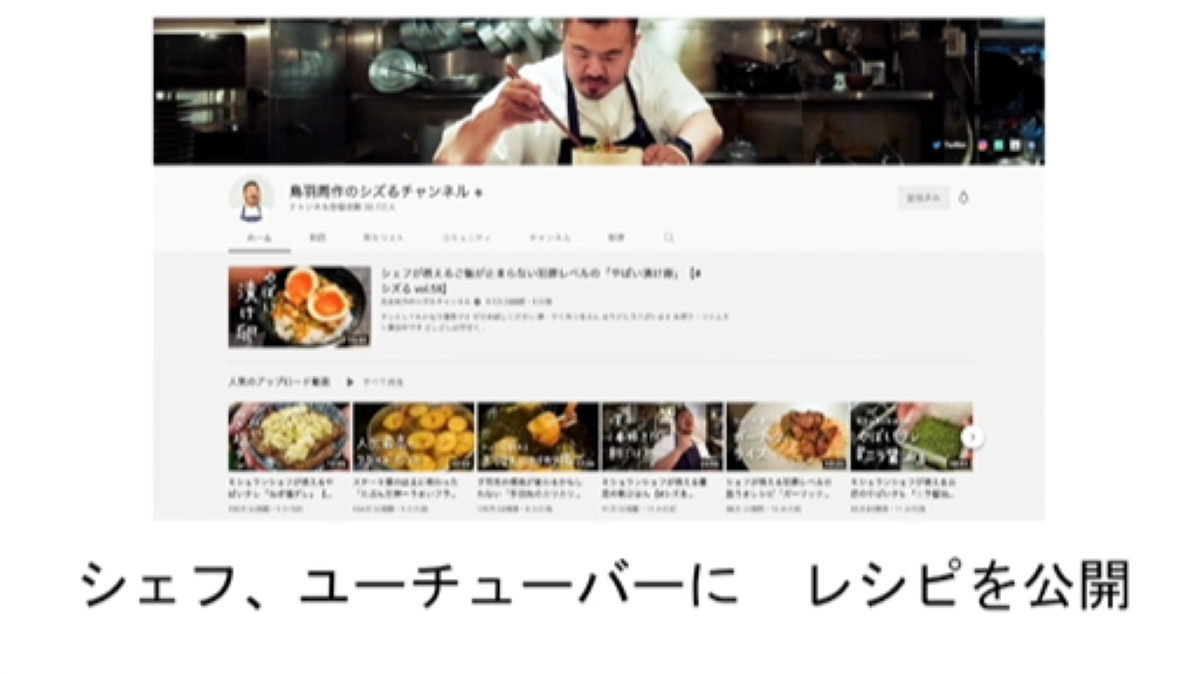 A chef turned YouTuber shares his recipes online
A chef turned YouTuber shares his recipes onlineSHIMA: So that’s what you’re thinking when you share recipes for everyday dishes in addition to dishes you prepare at your restaurant.
TOBA: That’s right. One of the cornerstones of my thinking is this. When we chefs want to make the world a better place with our cuisine, there’s always someone we imagine in our minds. You can’t be creative without imagining someone at the other end. Whatever you do, the initial motivation must be rooted in the question, “What does the customer want?”
During the Covid pandemic, for example, YouTube seemed like the right medium because people were spending more time cooking at home. And I want people to actually try making the recipe if possible, so it should be something that can be put together in 15 minutes with ingredients anyone can buy, using the cooking utensils they have at home. For me, the most important thing is whether my wife can successfully reproduce it.
Where and how the excitement of the experience is verbalized
SHIMA: You launched your company Sizuru with the goal of creating more such culinary experiences for the mass market. It’s not every day that a chef launches his own creative agency.
TOBA: I wanted to make the world a better place with my cuisine, yet it seemed to me that too few problems could be solved within the confines of the restaurant format. At the same time, I realized that teaming up with Hakuhodo Kettle would expand the creative toolbox available for problem-solving. It also occurred to me that doing business in new places, rather than depending solely on restaurant revenues, would serve as an example of a new business model for the food services industry.
SHIMA: Your multiple activities at Sizuru are underpinned by the themes of maximizing experiential value and expanding into the mass market, which you mentioned at the outset. A wide range of techniques are employed, I imagine. For example, Ministop has rolled out the “Tareben,” a bento (lunchbox) featuring a specially flavored sauce, while just recently, in May, Lawson released three new varieties of ice cream. You oversaw both projects.
TOBA: For the Tareben lunchbox, I focused on how to create an exciting experience within the convenience store bento price range. Emphasizing the quality of the ingredients in a 500-yen lunchbox isn’t a very credible approach. So I hit on the idea of achieving great flavor with the seasoning rather than by preparing the ingredients in a particular way. Let the flavoring do the talking, right?
In Japan, I thought to myself, that flavoring had to be the soy-based sauce tare. I also insisted on an eminently hashtagable name, figuring that it would go viral on social media, with people commenting about how rice tasted so good with the sauce they wolfed it down. I think that whether the excitement of the experience can easily be verbalized is just as important as making something that tastes good.
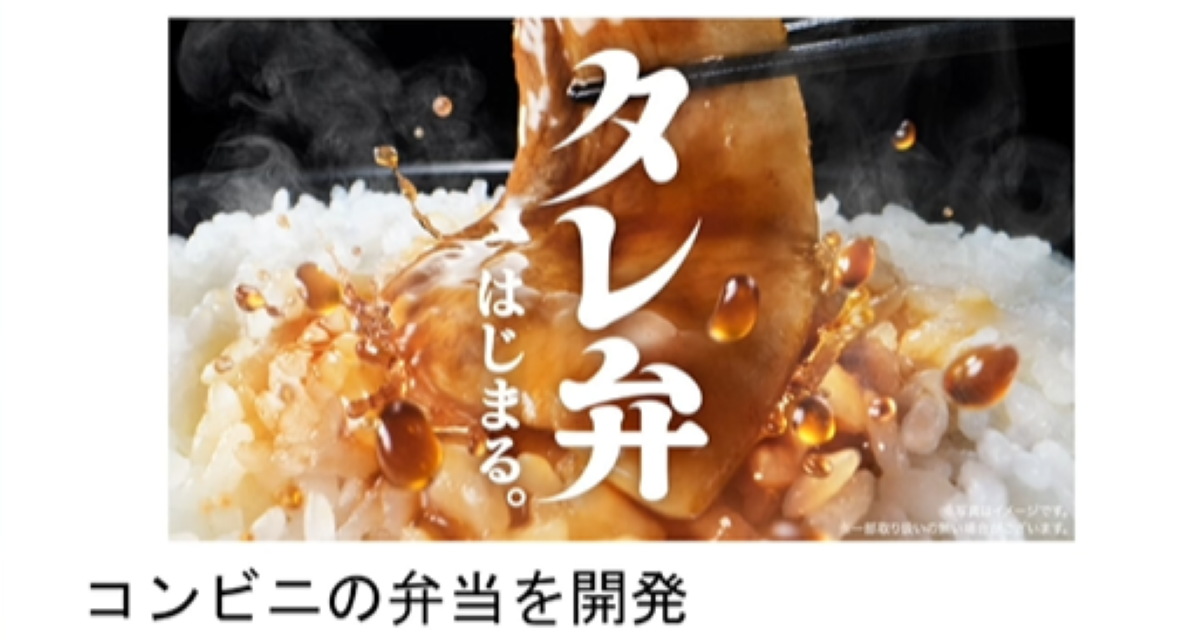 Among the chef’s creations: this convenience store bento
Among the chef’s creations: this convenience store bentoSHIMA: The ice cream comes with instructions on how to eat it, right? After removing it from the freezer, wait three minutes, four minutes, and eight minutes respectively before eating. It’s a designed experience. Again, you did that figuring it would go viral on social media, right?
TOBA: That’s right. Just as expected, there were lots of comments about how the ice cream tasted completely different when you ate it after abstaining for eight minutes. Some people said they took a walk during the eight-minute wait. A design like this adds experiential value to the simple act of buying and eating.
When you think something tastes great, you want to recommend it to someone, right? By talking about it on social media, you share the experiential value you yourself derived from the product. Your excitement becomes infectious, which may end up enhancing your own excitement. Besides making the product itself taste good, I also often factor in this aspect, communication.
SHIMA: So the design of the experience pre- and post-consumption is also a priority for you.
TOBA: That’s right. It’s truly a matter of recreating the restaurant experience beyond the restaurant. Say for example you’ve made a restaurant reservation for your wedding anniversary. You wonder what you should wear for the occasion. Then, once you’ve enjoyed the big day, you post your memories on social media, and if someone from the restaurant leaves a comment, the joy of the occasion lasts that much longer. The excitement of the experience begins before you even arrive. How do you design a blueprint around the product for the entire experience from the lead-up to the follow-up? That, I think, is going to become a key question from now on.
It’s all about context. A cup of instant noodles eaten in the course of one’s daily routine is not particularly exciting. But eaten on the summit of Mount Fuji, it’s worth getting excited about. Context deepens the excitement, I always think.
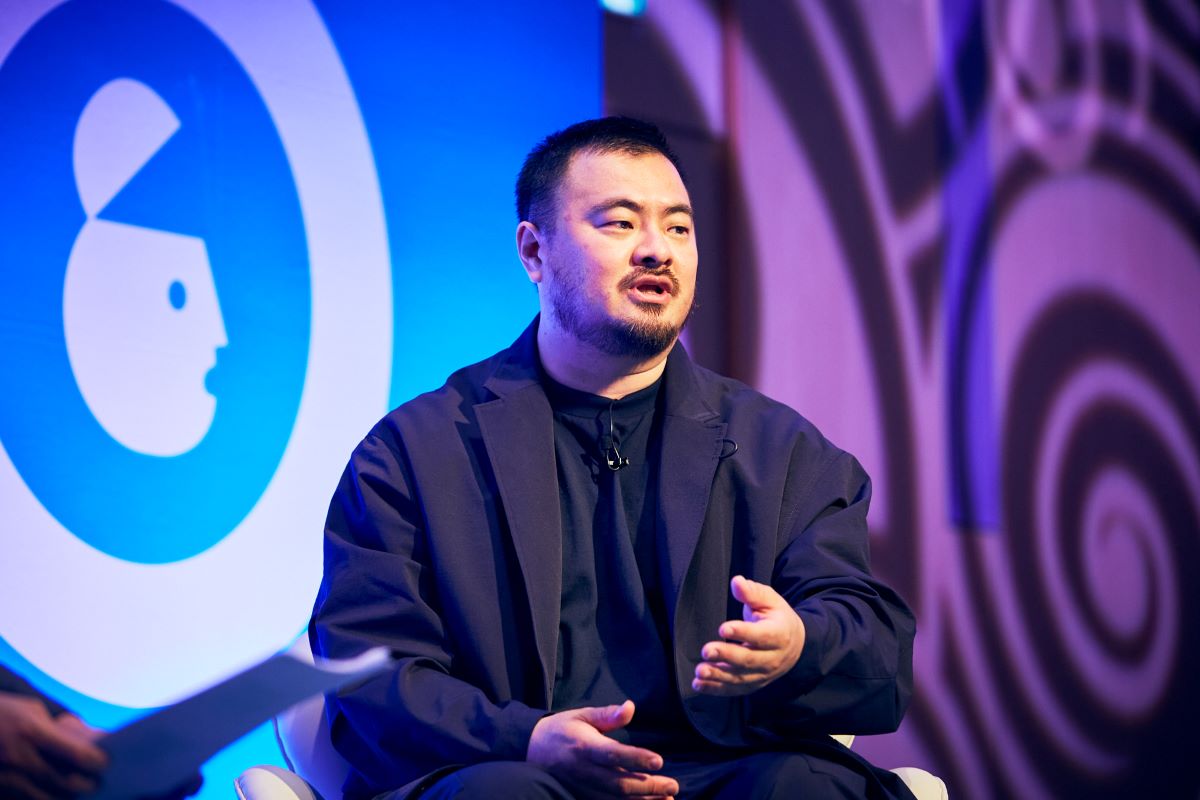
When deciding things, always imagine your audience
SHIMA: You’re keenly attuned to how customers in each place differ in their sensibilities and values. A diner at an upscale restaurant is looking for a different form of excitement from a convenience store customer.
TOBA: I think that’s because I’m constantly imagining who they are. I envision, for example, what kind of handbag or watch they might arrive with. I then assess what special touches they might appreciate. Or to use a convenience store as an example, some people think buying an ice cream is no big deal, while others look forward to a slightly expensive ice cream once a week as a special treat. I decide exactly what to do after imagining who the audience is and what would make them happy. I believe that not letting your own convenience dictate what to make is key.
SHIMA: Yes, it’s really important to avoid that. In the old days of advertising, branding typically presented a complete picture of the brand. “This is what our brand is all about, period.” But now I think there’s been a shift to branding with more blanks to fill in. It’s left up to the creativity of the audience, it’s fair to say.
In the case of the Tareben lunchbox we talked about earlier, the tare sauce was such a sensation, I understand, that it’s to be released as a separate product. That too is, in a sense, a case of a product emerging after being left to the audience. It’s fascinating how the culture of tare sauce has spread among the audience like this.
When talking to people who work in branding and communications, I often bring up the California roll. Put yourself in a classic sushi chef’s shoes. You meant to spread sushi across the globe, but then for some reason the avocado salmon roll appeared. A sushi fundamentalist might think, “That’s not sushi!” But saying it’s great and accepting it as sushi is a better way to spread the culture. So nowadays, instead of imposing holy writ on your audience, it’s more important to build a brand that empowers the audience to overwrite the brand’s holy writ with their own creativity. That’s what I’ve come to feel.
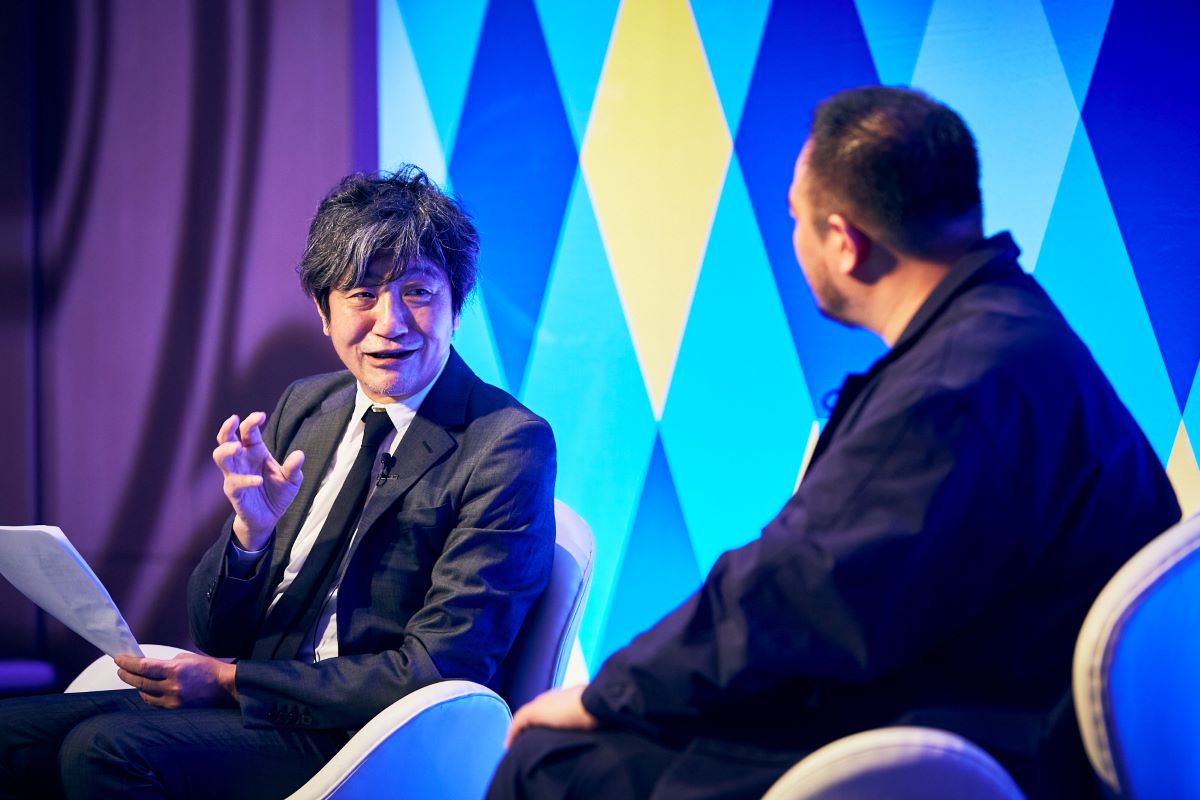
TOBA: Absolutely. My own take is, building a brand with the customer, or rather giving shape to what they want, is how you enable the brand to evolve and develop into a culture.
SHIMA: I’d also like to ask a bit about your online shop, the Sizuru Store. Online shopping inevitably tends to revolve around the product. How do you create an experience in the process?
TOBA: Let me give you an example, Futsu no Mayonnaise (“Regular Mayonnaise”). This product has a short best-before date and is designed above all to taste great. I think you can stir up demand by making something slightly oddball compared to your garden-variety product. If you try this mayonnaise at home and then eat a dish prepared with it at my restaurant, you can check your answer against the key, as it were. By treating online sales as a means rather than an end, I believe it should be possible to come up with more designs for new and exciting experiences.
SHIMA: So you’ve designed an experience integrated across time and space: shopping online, using the product at home, and then going to the restaurant. Finally, may I ask what you intend to work on next?
TOBA: I want to draw up precise designs for exciting experiences and then deliver them, whether they cost 500 yen or 20,000 yen, whatever category they fall into. Experiential value will, I believe, increasingly come to be seen as a priority in society at large. We at Sizuru intend to delve deeper into this area and bring our designs to a wider audience.
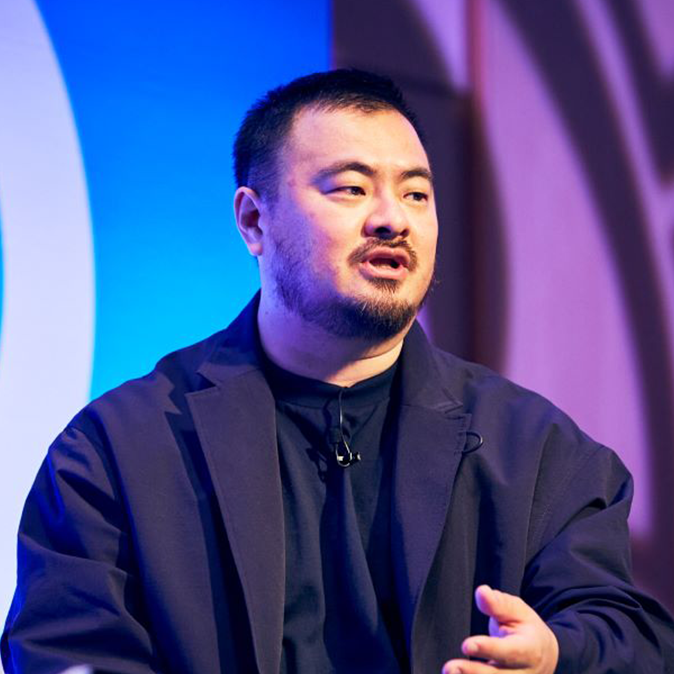
CEO, Sio Inc. / Sizuru Inc.
